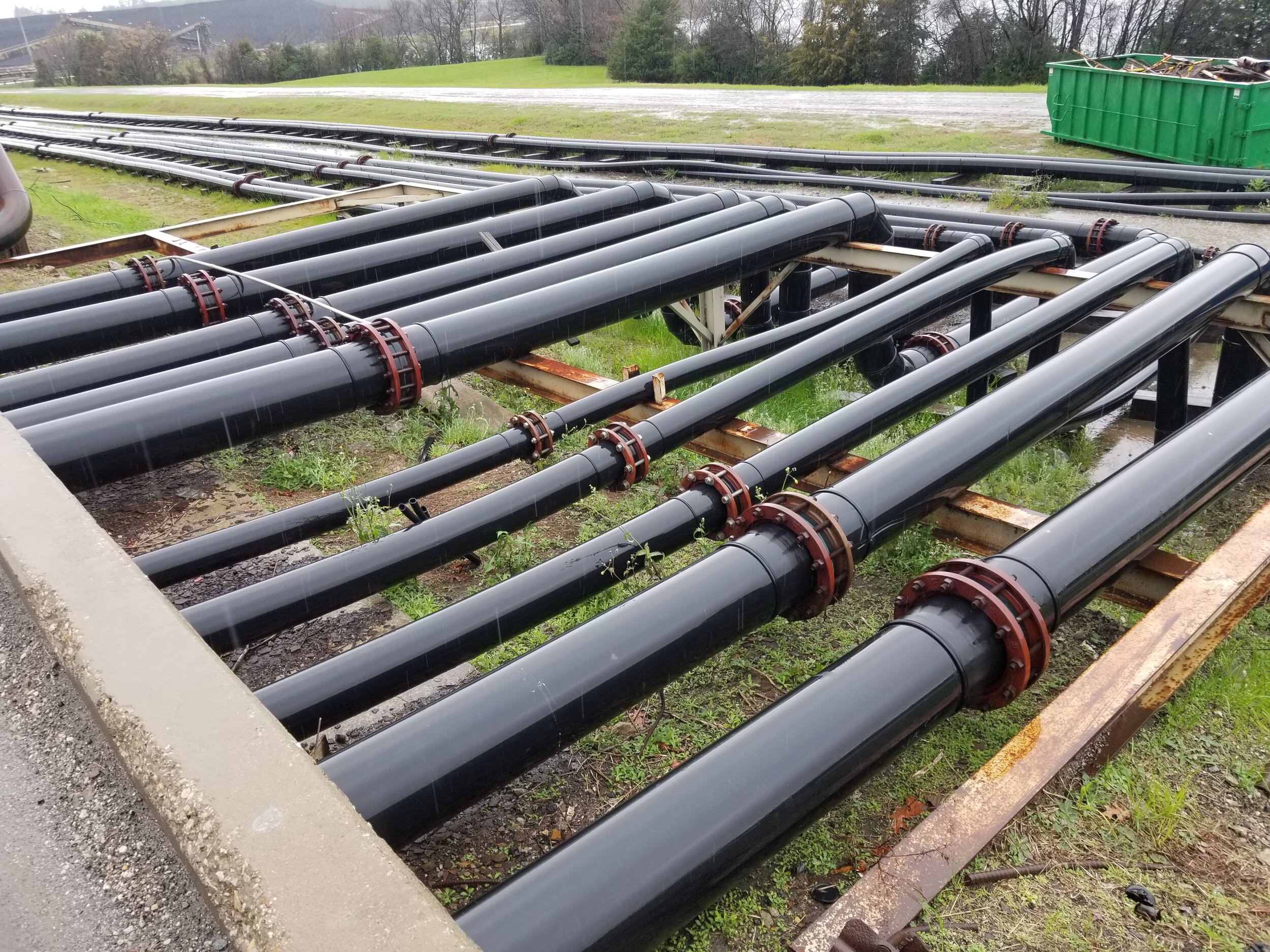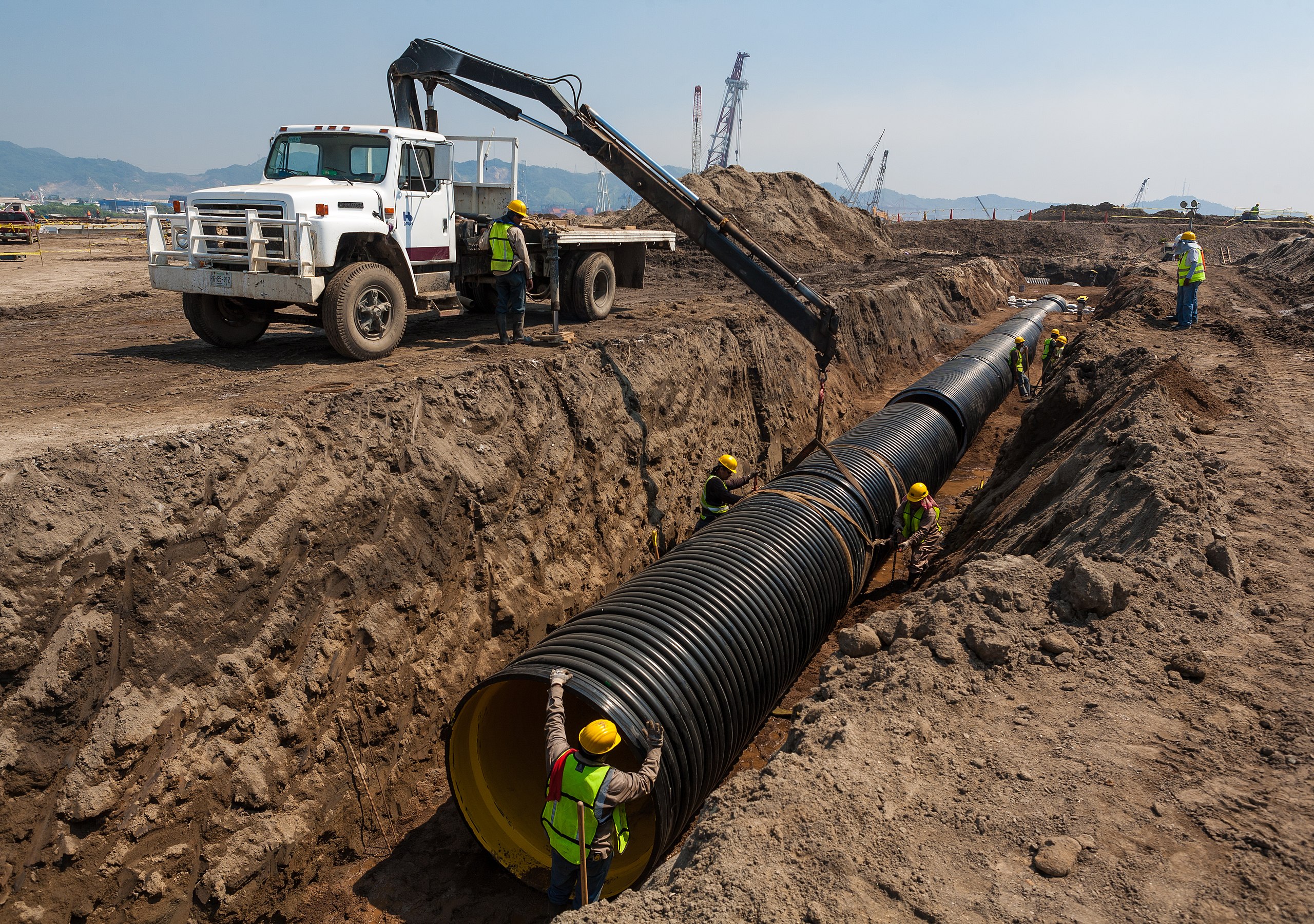FAQs About Texas hdpe pipe manufacturer and What They Offer
Wiki Article
Discover the Production Refine Behind High-Quality HDPE Pipeline and Its Applications
The production process of high-grade HDPE pipes is intricate and systematic. It starts with the choice of resources that boost performance. Following this, ethylene goes through polymerization to create material, which is after that formed via extrusion. Quality control is critical, ensuring that the final item fulfills rigid criteria. The journey of HDPE pipes doesn't finish with production. Their applications across different industries expose a more comprehensive significance worth examining.Recognizing HDPE: Features and Advantages

High-density polyethylene (HDPE) is a versatile thermoplastic understood for its sturdiness and resistance to numerous ecological variables. This product exhibits excellent tensile stamina, making it appropriate for requiring applications. Its low-density framework adds to a lightweight item, helping with simplicity of handling and setup. HDPE likewise showcases impressive resistance to chemicals, which minimizes degradation when revealed to extreme materials.
The product's low dampness absorption further enhances its durability, making it excellent for use in pipelines and storage tanks. Additionally, HDPE is resistant to ultraviolet (UV) radiation, ensuring that products preserve their stability even when subjected to sunshine. Its adaptability allows for the production of elaborate forms without endangering toughness. The environmentally friendly nature of HDPE, commonly originated from recycled products, contributes to its appeal, advertising sustainable techniques in manufacturing. In general, these buildings and advantages make HDPE a favored option for different industrial and customer applications.
Resources Choice for HDPE Manufacturing
The selection of resources for HDPE production is important to verify the final product fulfills the preferred specs and quality criteria. High-density polyethylene (HDPE) is primarily produced from polymerized ethylene, acquired from nonrenewable fuel sources such as gas or unrefined oil. The quality of these feedstocks substantially influences the mechanical and thermal buildings of the final HDPE.Ingredients likewise play a considerable function in enhancing HDPE's performance, consisting of antioxidants, UV stabilizers, and colorants, which boost toughness and resistance to ecological aspects. The choice procedure must think about not just the chemical composition of the raw products however additionally their handling attributes to assure efficient production.
The sourcing of raw materials ought to prioritize sustainability and conformity with ecological laws, as responsible techniques are essential in today's market. Inevitably, careful resources choice lays the structure for producing premium HDPE pipes suitable for varied applications.
The Extrusion Process: Forming HDPE Pipe
The extrusion process plays a crucial duty fit HDPE pipes, beginning with precise material prep work methods that guarantee suitable circulation and uniformity. Just as important is the layout of the die, which straight influences the last dimensions and surface top quality of the pipe. With each other, these variables contribute greatly to the effectiveness and high quality of HDPE pipe manufacturing.Material Preparation Methods
Reliable manufacturing of HDPE pipelines begins with careful product preparation methods, particularly the extrusion procedure. Throughout this phase, high-density polyethylene material is initial dried out to get rid of dampness, making sure ideal circulation qualities. The resin is after that fed right into the extruder, where it undergoes home heating and melting, changing into a thick state. This heating process is very carefully regulated to preserve the material's honesty and performance. The liquified HDPE is compelled with a die, forming it into a constant pipeline type. Proper temperature level administration throughout extrusion is essential, as it directly affects the product's residential properties and the end product high quality. As soon as shaped, the HDPE pipe is cooled and reduced to specified lengths, all set for succeeding processing and applications.Die Layout Importance
Precision in die style plays a crucial role in the extrusion procedure of HDPE pipelines. The die serves as the last shaping tool, directly influencing the pipeline's measurements, wall density, and surface finish. A properly designed die guarantees uniform product circulation, decreasing issues such as irregularities and vulnerable points. The geometry of the die have to be maximized to fit the particular residential or commercial properties of HDPE, including its thickness and thermal habits during extrusion. In addition, the cooling rate of the product as it goes through the die can noticeably affect the pipeline's structural stability. Investing in sophisticated die modern technology is essential for manufacturers aiming to generate high-quality HDPE pipes that satisfy sector criteria and consumer expectations.Quality Assurance Steps in HDPE Manufacturing
Different elements affect the quality of HDPE pipe manufacturing, reliable quality control procedures are essential to ensure uniformity and integrity in the last product (American Plastics HDPE Pipe Manufacturing). Key quality control methods consist of extensive product examination, validating that the raw polyethylene satisfies recognized criteria for purity and density. During the extrusion process, criteria such as temperature level, stress, and cooling time are closely kept track of to preserve dimensional accuracy and architectural honestyIn addition, post-production testing is important; makers usually carry out hydrostatic examinations to analyze the pipe's strength and resistance to stress. Visual examinations for surface flaws additionally improve high quality assurance. Certification from appropriate standards companies, like ASTM or ISO, supplies an extra layer of integrity. By applying these thorough quality assurance procedures, manufacturers can minimize defects, improve performance, and guarantee that the HDPE pipes meet the certain requirements of various applications, eventually leading to customer contentment and depend on in the item.
Applications of HDPE Pipeline Across Industries
HDPE pipelines are utilized across various fields due to their durability and flexibility. In water circulation systems, they assure effective shipment, while in wastewater administration, they provide dependable solutions for waste transport. Additionally, farming watering networks gain from HDPE's resistance to corrosion and flexibility, making it a perfect selection for modern-day farming methods.
Water Distribution Equipments
A substantial variety of sectors depend on high-density polyethylene (HDPE) pipelines for efficient water circulation systems. Recognized for their longevity and resistance to corrosion, HDPE pipes are widely used in metropolitan supply of water networks, farming irrigation, and industrial applications. Their lightweight nature helps with simple handling and installation, minimizing labor prices and time. Furthermore, HDPE pipelines can accommodate different pressure degrees, making them appropriate for both reduced and high-pressure systems. custom hdpe pipe manufacturing Midland TX. The versatility of the product permits seamless integration right into existing framework, lessening the requirement for substantial excavation. In addition, HDPE's resistance to chemical leaching guarantees that the water delivered stays risk-free and tidy, making it an optimal selection for keeping the top quality of potable water across various fieldsWastewater Administration Solutions
Efficient water circulation systems also pave the way for cutting-edge wastewater monitoring options, where high-density polyethylene (HDPE) pipes play a considerable function. Popular for their longevity and resistance to corrosion, HDPE pipelines are perfect for transporting wastewater in different setups. Their adaptability enables easy installation in complicated settings, reducing the demand for substantial excavation. Additionally, HDPE's smooth indoor surface decreases friction, enhancing flow rates and performance. These pipelines are additionally resistant to chemical leaching, making sure that contaminants do not jeopardize the surrounding setting. Industries, communities, and treatment facilities increasingly rely upon HDPE pipes for their dependability and longevity, making them a favored option for modern wastewater monitoring systems. This flexibility emphasizes the important significance of HDPE pipes across numerous applications.Agricultural Irrigation Networks
Agricultural irrigation networks benefit substantially from the usage of high-density polyethylene (HDPE) pipes, which offer reliable and trusted water delivery to plants. HDPE pipes are light-weight, making them simple to transfer and set up, while their flexibility allows for numerous setups in varied surfaces. These pipes demonstrate outstanding resistance to deterioration, chemicals, and UV radiation, making sure toughness in extreme farming atmospheres. Additionally, their smooth indoor surface area decreases rubbing loss, maximizing water circulation and decreasing energy expenses linked with pumping. The long life of HDPE pipelines, commonly exceeding 50 years, adds to decrease maintenance and substitute expenses. Farmers progressively rely on HDPE pipes to improve watering effectiveness and advertise sustainable agricultural techniques, inevitably leading to enhanced plant yields and source preservation.
Future Patterns in HDPE Pipe Technology
As the need for lasting and effective framework grows, improvements in HDPE pipe modern technology are poised to change numerous markets. Emerging patterns include the combination of smart modern technologies, such as sensing units and IoT abilities, which help with real-time surveillance of pipe conditions, minimizing upkeep prices and avoiding leakages. Furthermore, the advancement of advanced manufacturing strategies, such as 3D printing, is allowing the production of complicated, tailored pipeline designs that satisfy specific task needs.In addition, the focus on recycling and circular economic climate techniques is driving the advancement of HDPE pipelines made from recycled materials, enhancing sustainability. Improved jointing techniques, such as electro-fusion and mechanical installations, are also boosting installation efficiency and reliability. Ultimately, the growing focus on ecological regulations is pushing producers to adopt greener manufacturing processes, making certain that HDPE pipelines not just fulfill industry requirements but additionally foster a more sustainable future for facilities growth.
Often Asked Inquiries
Just How Does HDPE Compare to Other Plastic Materials?
HDPE outshines several other plastic materials concerning longevity, chemical resistance, and flexibility. Its low thickness and high tensile strength make it American Plastics HDPE Pipe Manufacturing excellent for numerous applications, commonly surpassing alternatives in both efficiency and durability.What Are the Ecological Effects of HDPE Manufacturing?
The environmental influences of HDPE manufacturing include greenhouse gas exhausts, power usage, and prospective pollution from manufacturing procedures. In addition, inappropriate disposal can result in soil and water contamination, raising issues about long-lasting environmental results.Can HDPE Pipes Be Recycled?
Yes, HDPE pipelines can be reused. Lots of facilities accept utilized HDPE for processing, changing it right into brand-new items. This recycling adds to sustainability initiatives, decreasing plastic waste while saving resources and energy in the production cycle.What Is the Life Expectancy of HDPE Pipeline?

Exactly How Do Temperature Level Variants Influence HDPE Pipe Performance?
Temperature variants greatly affect HDPE pipe efficiency, affecting flexibility and stamina. Heats can lead to softening, while low temperature levels might create brittleness, ultimately affecting the pipeline's toughness and viability for various applications in varied environments.Report this wiki page